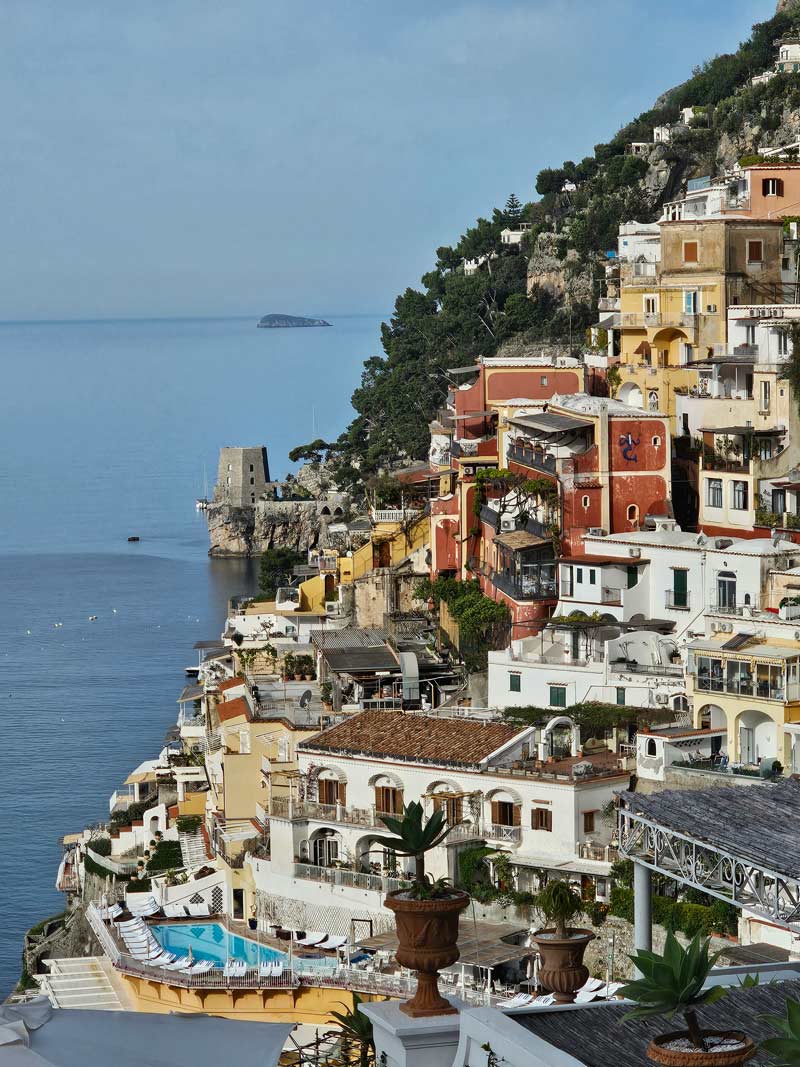Discovering Italy’s Amalfi Coast: The Inspiration Behind M.C. Escher
As a kid I loved the Dutch lithograph artist Maurits Cornelis (M.C.) Escher, in fact I still do! If you ever wondered where he got the inspiration for all his head-spinning artworks, Italy’s Amalfi Coast has all the answers – and a lot more attention-grabbing things to see and do too.
So much of my childhood was spent marveling at M.C.Escher’s mind-bending visuals like Metamorphosis II, Up and Down, Relativity and Convex and Concave. It looks like I wasn’t the only one either, going by the endless series of movies that have come out over the years like Inception and Labyrinth and games like Monument Valley that all feature Escher-like visions.
But alongside all the transformative tessellations, impossible angles, ambiguous shading and multiple sources of gravity, M.C. Escher’s works usually had something else in common; the background world in which they were set. This was often some sort of sunlit Mediterranean-style village with terracotta roofs, Medieval towers and featuring a labyrinth of staircases, doorways, and balconies. Villages where houses seemed stacked on top of each other like 3D jigsaw puzzles, creeping up hillsides from sheer cliffs with narrow lane-like roads crossed by arched bridges.
As a child, I was sure Escher included these strange-looking towns to help with the reality-jolting effect of his artworks, to set us up for his bizarre concepts by placing them in towns that looked unlike any other we’d ever seen before. I mean, where on earth would places exist that could possibly look like that?
Escher’s Inspiration
The Amalfi Coast in Southern Italy is where! Head south across the bay from Naples and you’ll come to Sorrento, head over the hill and it’s like you’ve arrived bang, smack in the middle of Escherville. Everywhere you look are the same towers, narrow bridges and neatly-fitting houses from many of his most famous works. So Escher didn’t invent those fantastical towns from his artworks, he replicated them exactly.
The fact is, Maurits loved Italy and lived there for over a decade – until Benito Mussolini started wearing his Blackshirts of course – and Escher travelled often to the Amalfi Coast where he would stay for weeks at a time to draw all its dramatic cliffs, staircases and geometric houses so he could use them later. It obviously made a deep impression on him as its unique architecture turned up again and again in his works from the 1920s on.

The Amalfi Coast
Once you know the history of the Amalfi Coast which starts in Positano and ends about 50km further south in Vietri sul Mare, this architecture makes a lot more sense. Of course, one reason is that the coastline is very steep forcing the houses to be built almost on top of each other as they ascend the hillsides. But the entire coast was also susceptible to raids by the Saracens, Muslim raiders who constantly harassed the inhabitants from their bases in North Africa. To defend against these raiders the locals built 80 odd towers over the centuries – the remains of which are still there and can be seen all along the Amalfi Coast even today.

Positano
Two of these watch towers Torre Trasita and Torre Clavel are still around and sit at either end of the main Spiaggia Grande beach in Positano. Torre Clavel was built in the 13th century – possibly, as the receipts from the stonemasons are long gone – while Torre Trasita is more recent, having been whipped up in the 16th century to guard against pirate raids, from the Ottomans this time.

Torre Trasita may well have been the inspiration for the rook in M.C.Escher’s Metamorphosis II as it is similarly semi-detached from the mainland and Atrani – the village he used to create his town – doesn’t have a watch tower.
Of course, there is a lot more to see in Positano than just ancient rook-like towers including:
Beach culture

Despite the acute angles of the cliffs here, there are still beaches in Positano and a lively culture to match. The weather here is Mediterranean too so bring your bikinis and plenty to drink. Spiaggia Grande is the coast’s largest and liveliest beach, complete with striped umbrellas, seafood trattorias, and – unfortunately – Instagrammers. But, if you want to avoid being in the background of someone else’s post you can always head over the Arienzo Beach for a quieter, more bohemian vibe.
Lemons
Lemons, lemons everywhere! The whole Amalfi Coast is a shrine to the humble lemon and Positano is no different with entire shops devoted to lemon produce including ceramics, soap, candy, candles, body cream, limoncello – and even just raw lemons in every size and shape you can imagine.
A mandatory here is a traditional Italian lemon granita Sorbetto di Limone which is served inside a giant frozen lemon skin. Just what the doctor ordered for a hot Mediterranean summer’s day!
Ferries

As it’s the beginning of the Amalfi Coast, Positano is an ideal jumping off spot for further exploration. It’s a busy hub for ferries with many commercial and private ones coming in and going out all the time. This makes it easy to get to and from Sorrento, Naples, Amalfi further down the coast – and even to the legendary island of Capri just off the coast!
A dream destination
Once you get to the Amalfi Coast it’s easy to see why M.C. Escher fell in love with the place. It’s just completely different to anywhere else you can visit. An incredible mix of Arab-Norman architecture, beach culture, the Euro elite, casual Italian dining styles and a hardcore obsession with lemons – what more could you possibly want? I’ll definitely be coming back – and next time I’ll bring my pens and sketching paper too!

Shopping and dining
For a small town there’s quite a good selection of shops to nose through, although be warned, as you might imagine for a clifftop village there are a lot of stairs and steps here. Plus, the alleyways are pretty narrow and can be filled with people so you’ll need your patience topped up at times. The streets are one way – at best! – and have a surprising amount of traffic on them, both pedestrian and motorised with buses coming through all the time too. It can be chaotic at times – but that’s Italy!
Luckily there are plenty of restaurants and bars around to cool off in for when it all gets a bit too much! Rooftop bars like Franco’s or Le Sirenuse’s Champagne Bar are ideal places to take in Positano’s golden west-facing sunsets and for dinner, check out Da Vincenzo and La Sponda.
If you’re feeling more adventurous, try La Tagliata. They serve a more rustic-influenced fare and are based a few hundred metres up the cliff. Fear not, they have a shuttle which can pick you up from wherever you’re staying. The trip up the winding two-way single lane cart track accompanied by classic Dean Martin tunes at sunset is an experience I’ll never forget!











